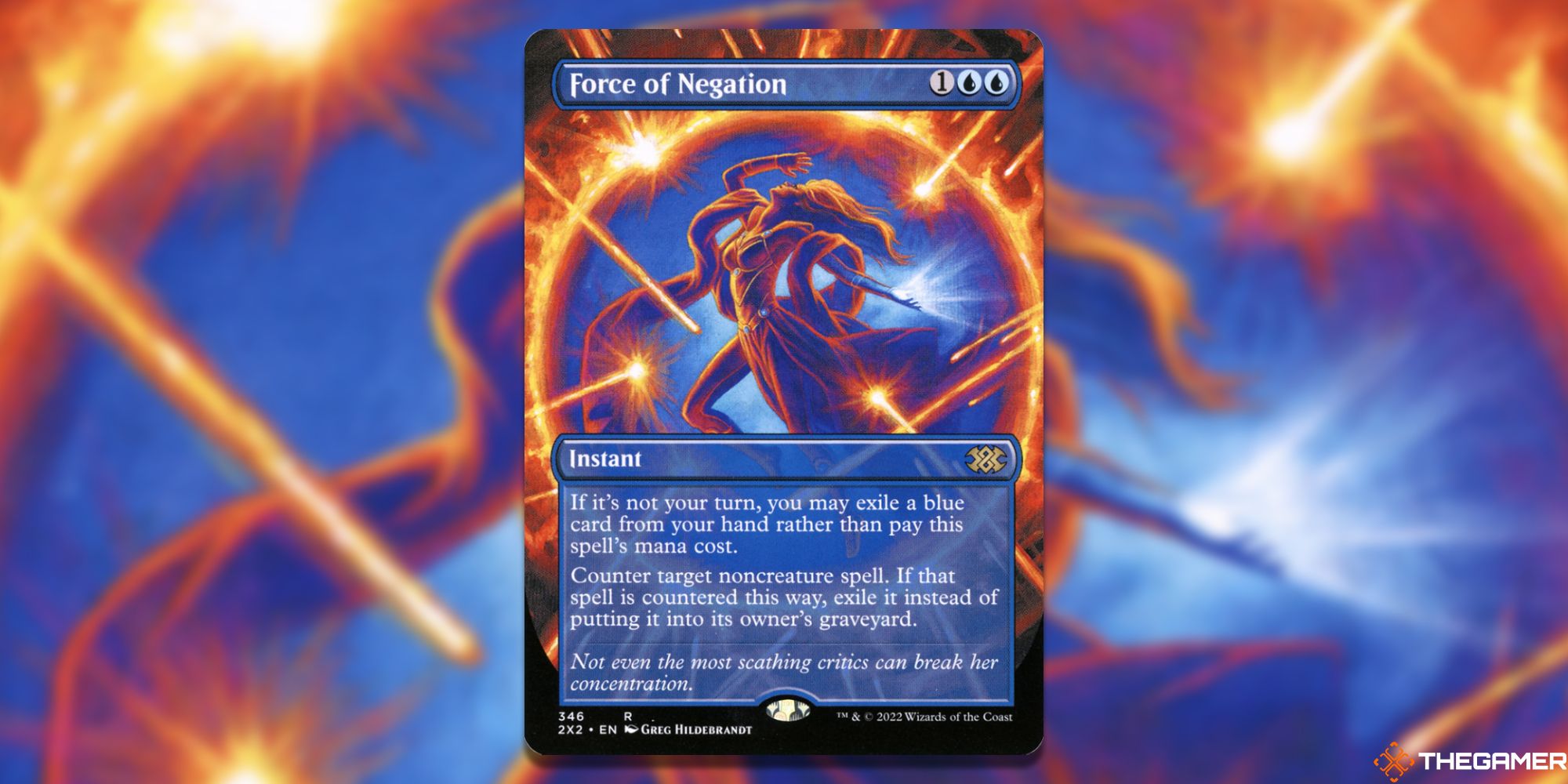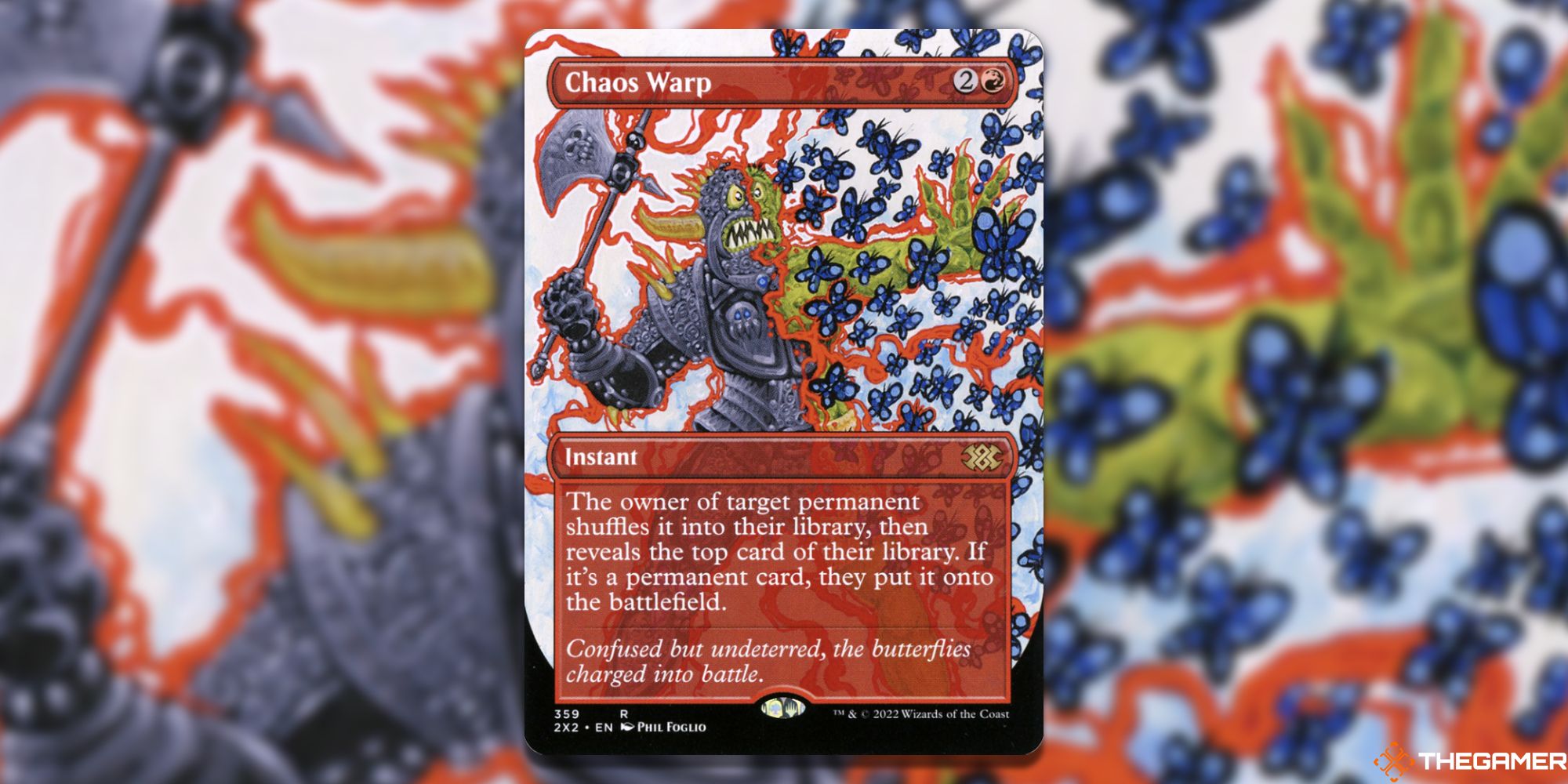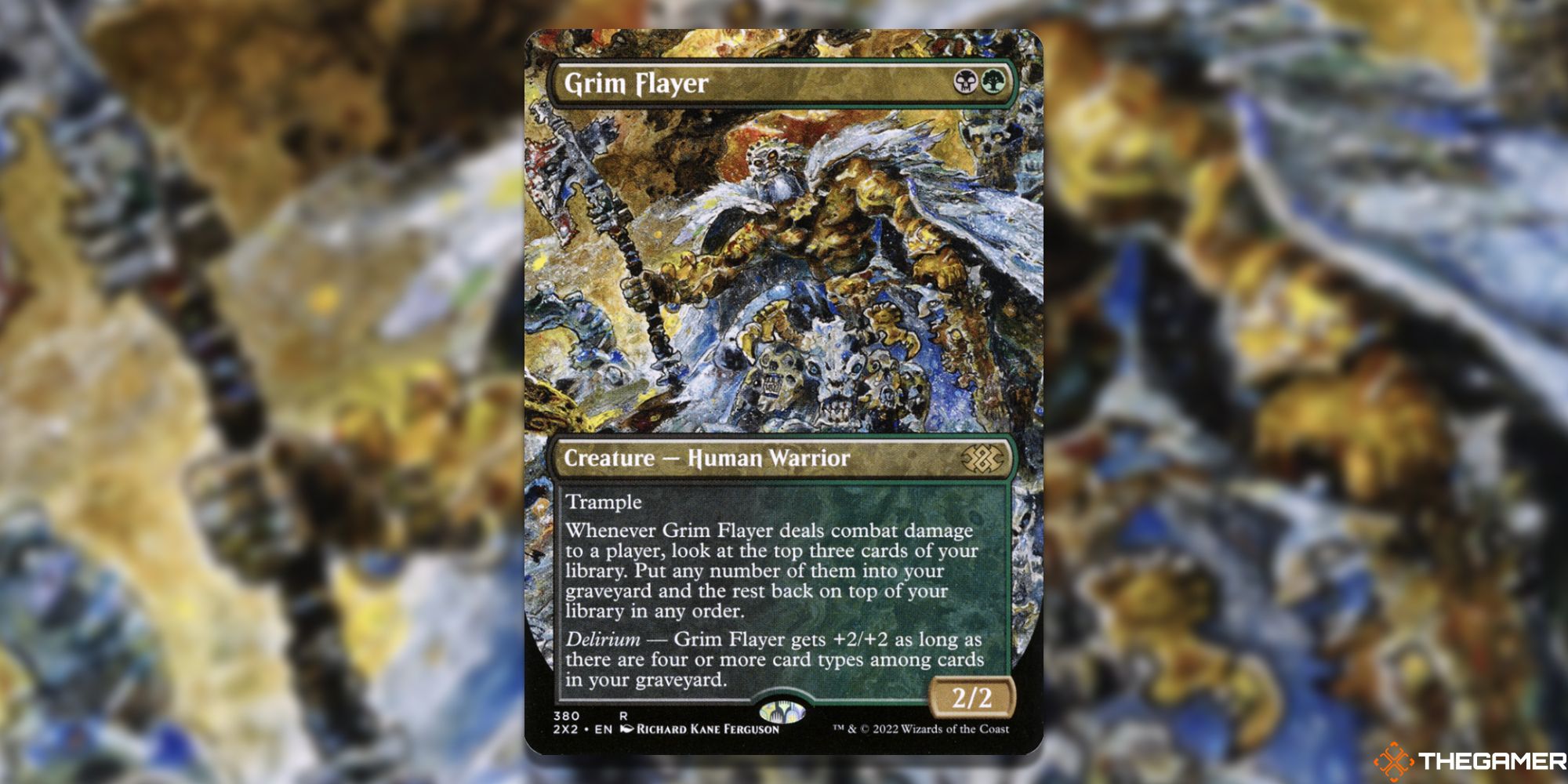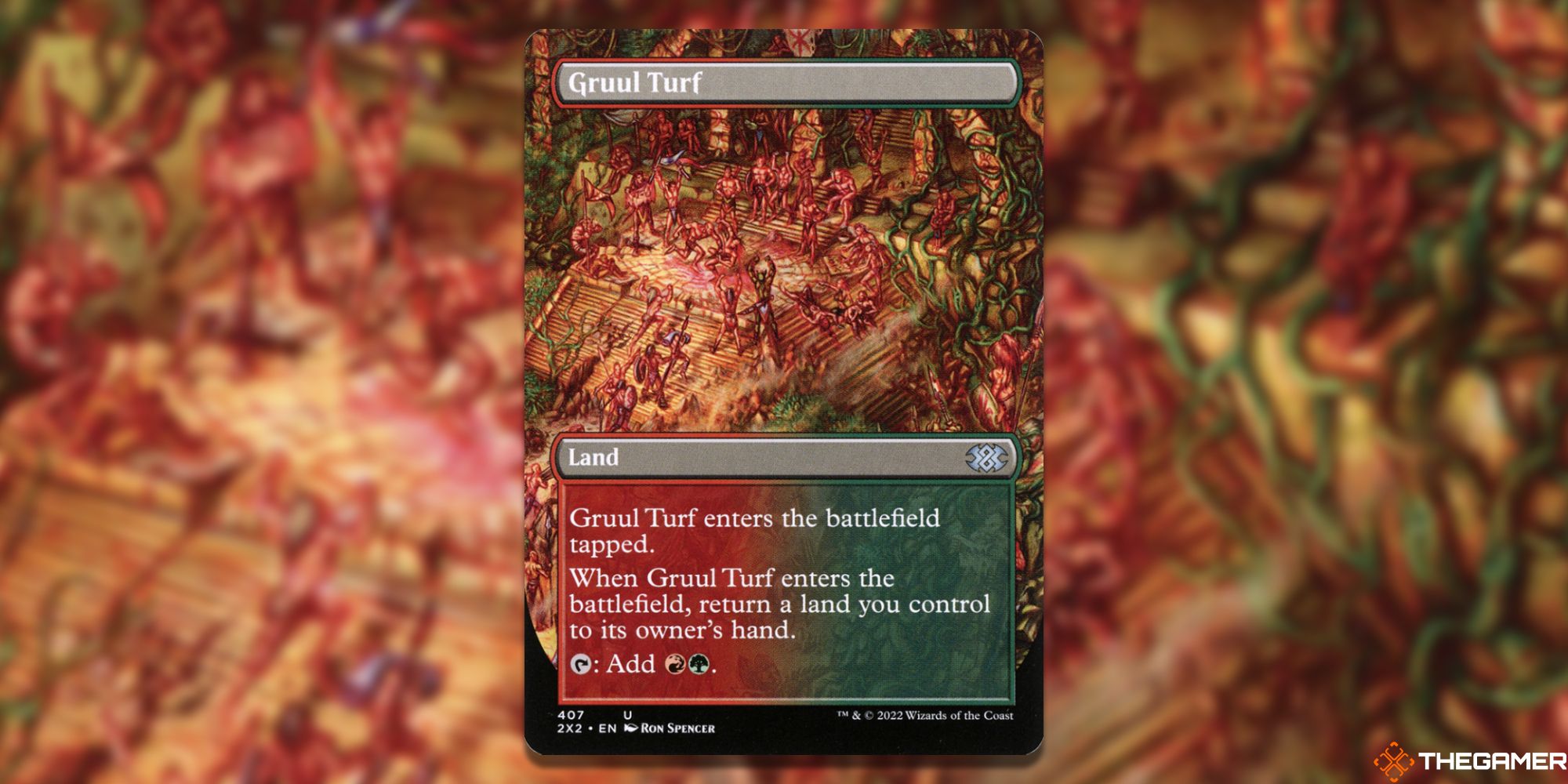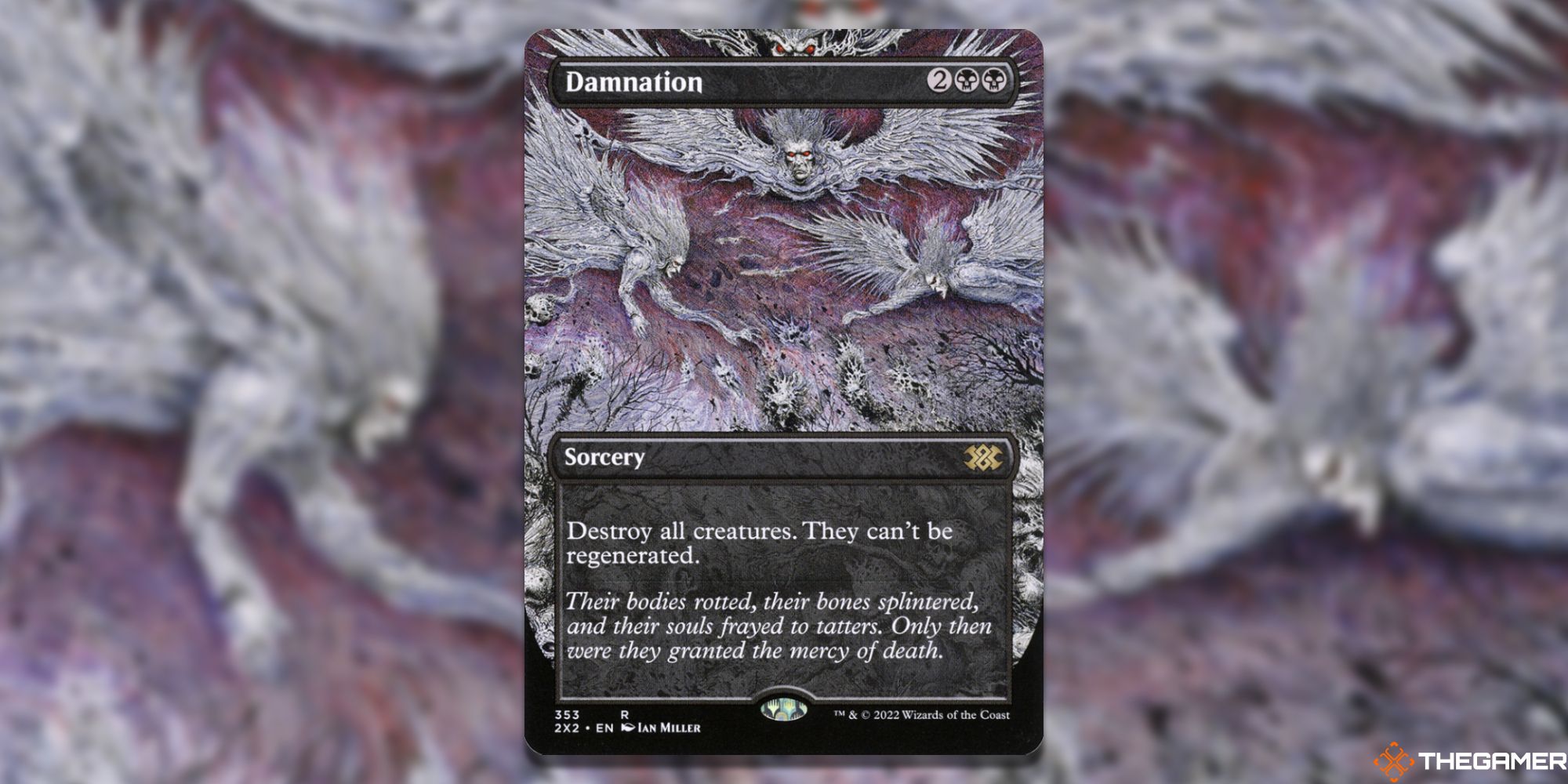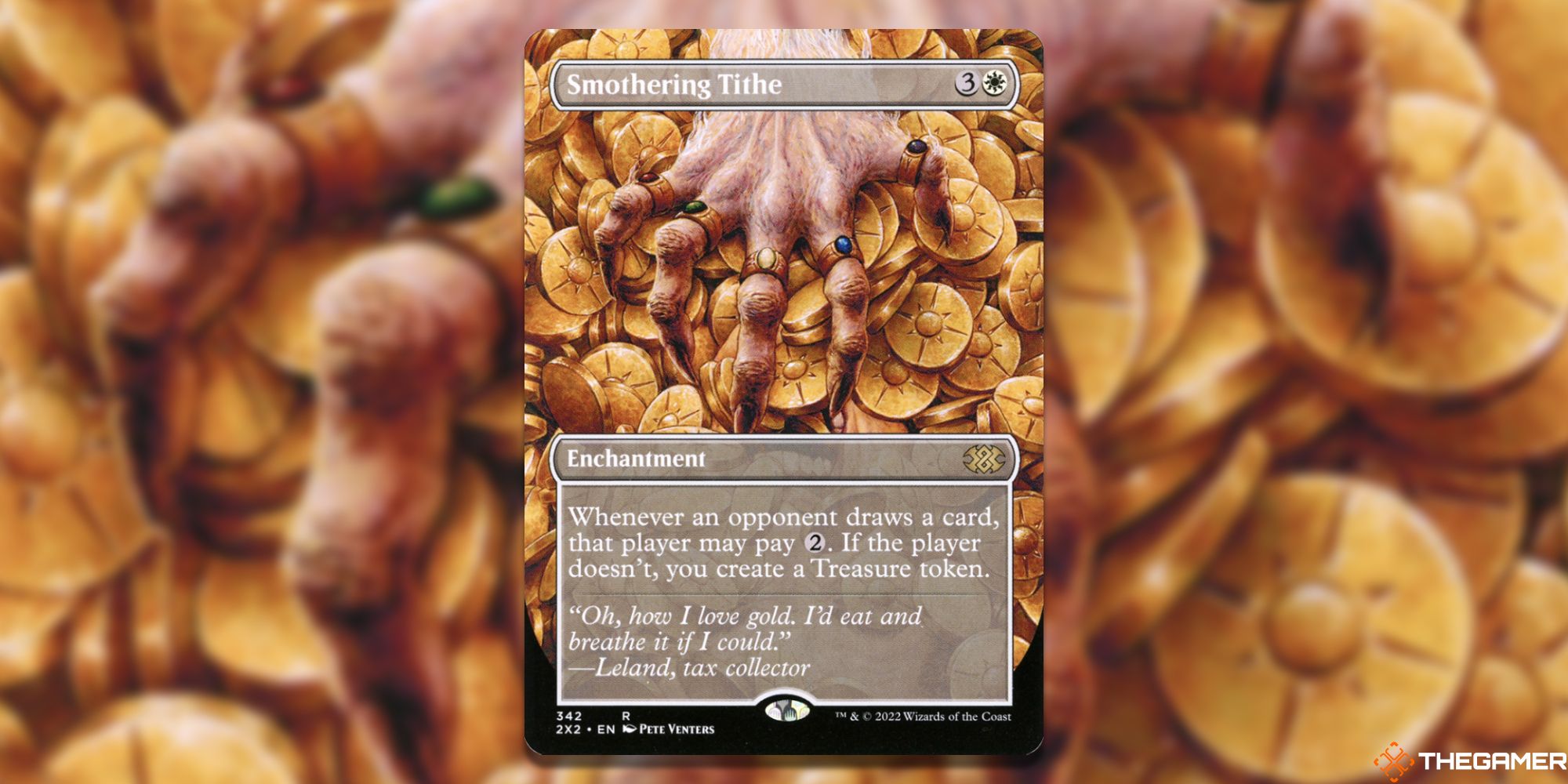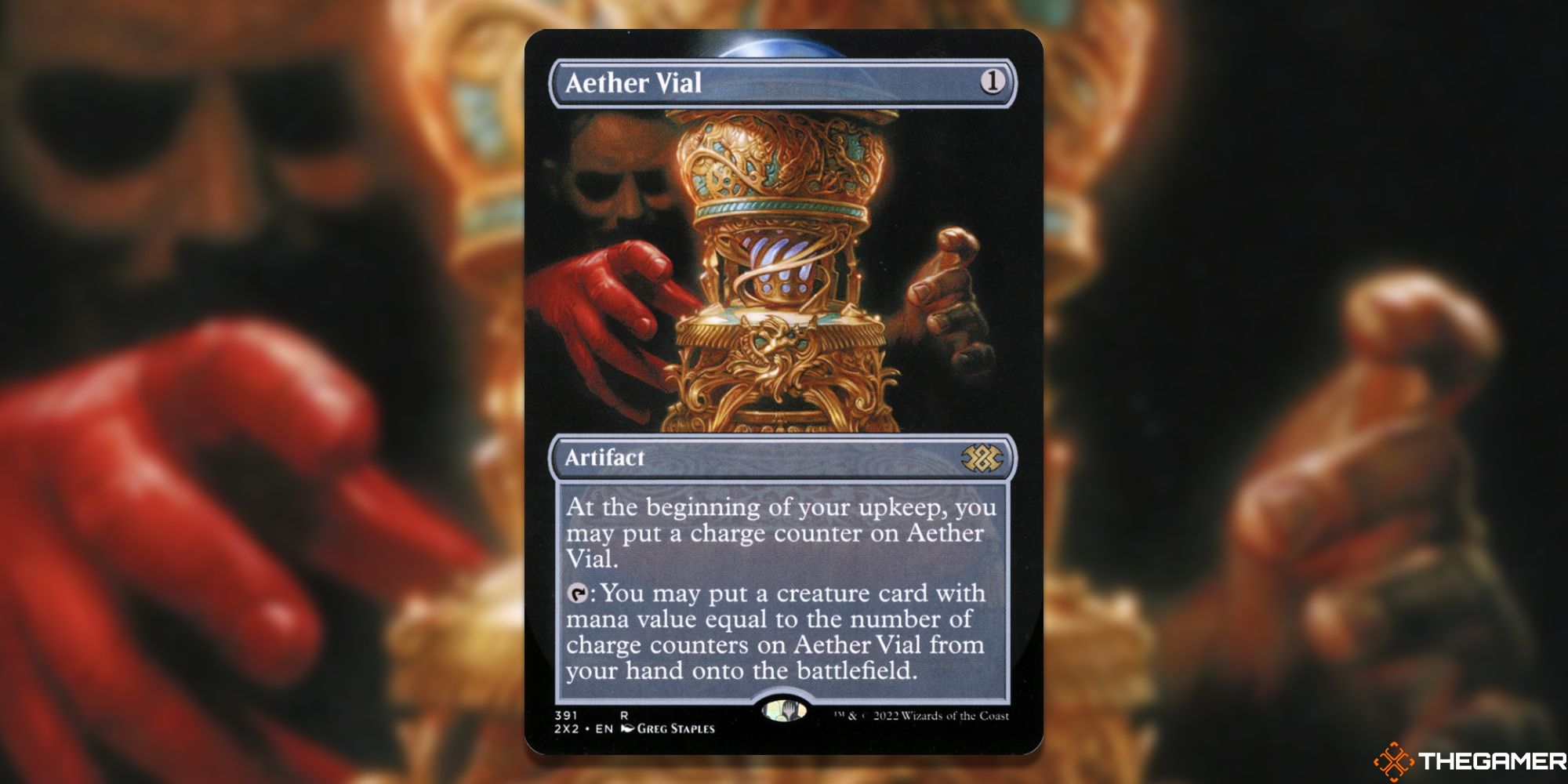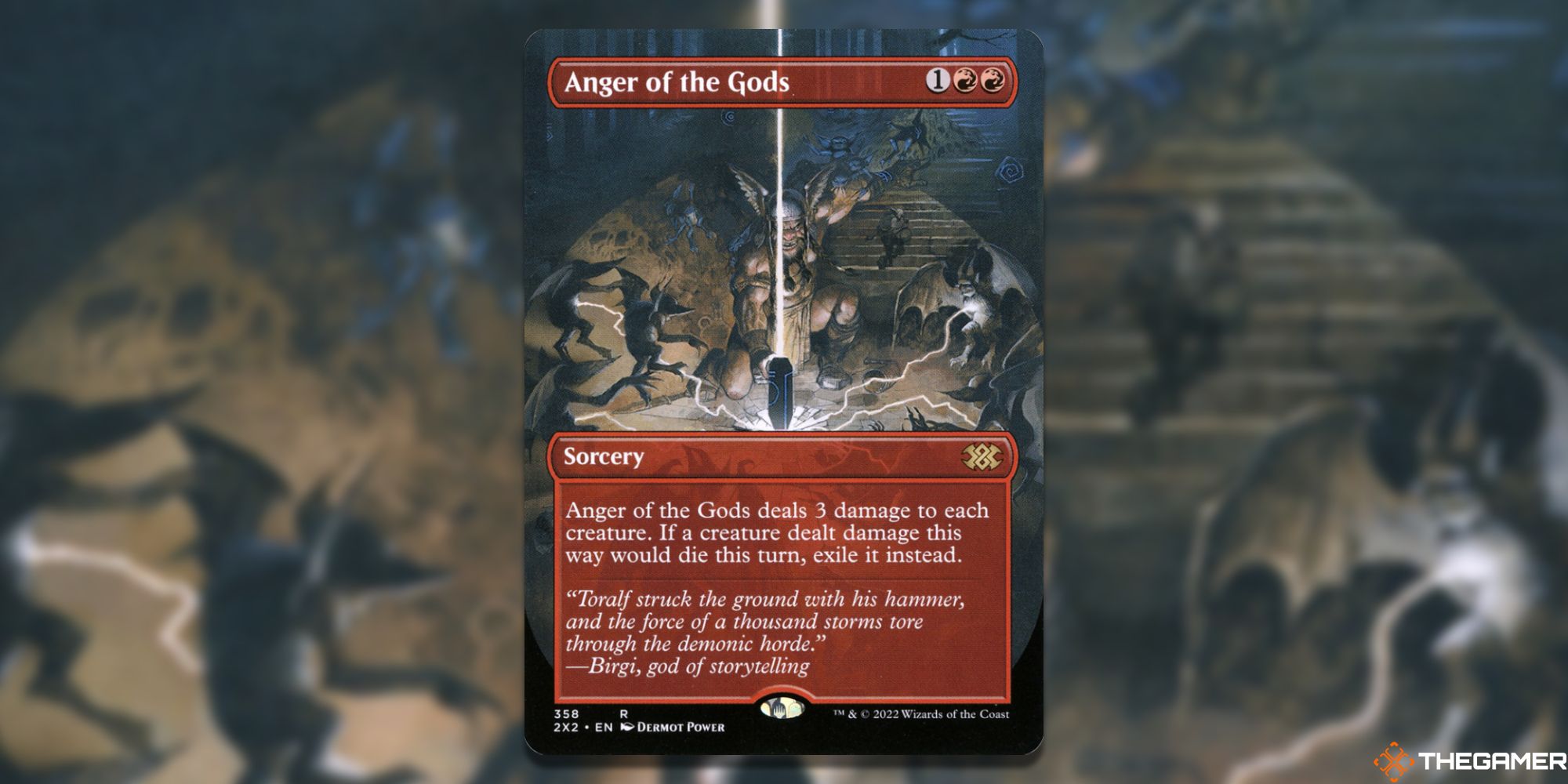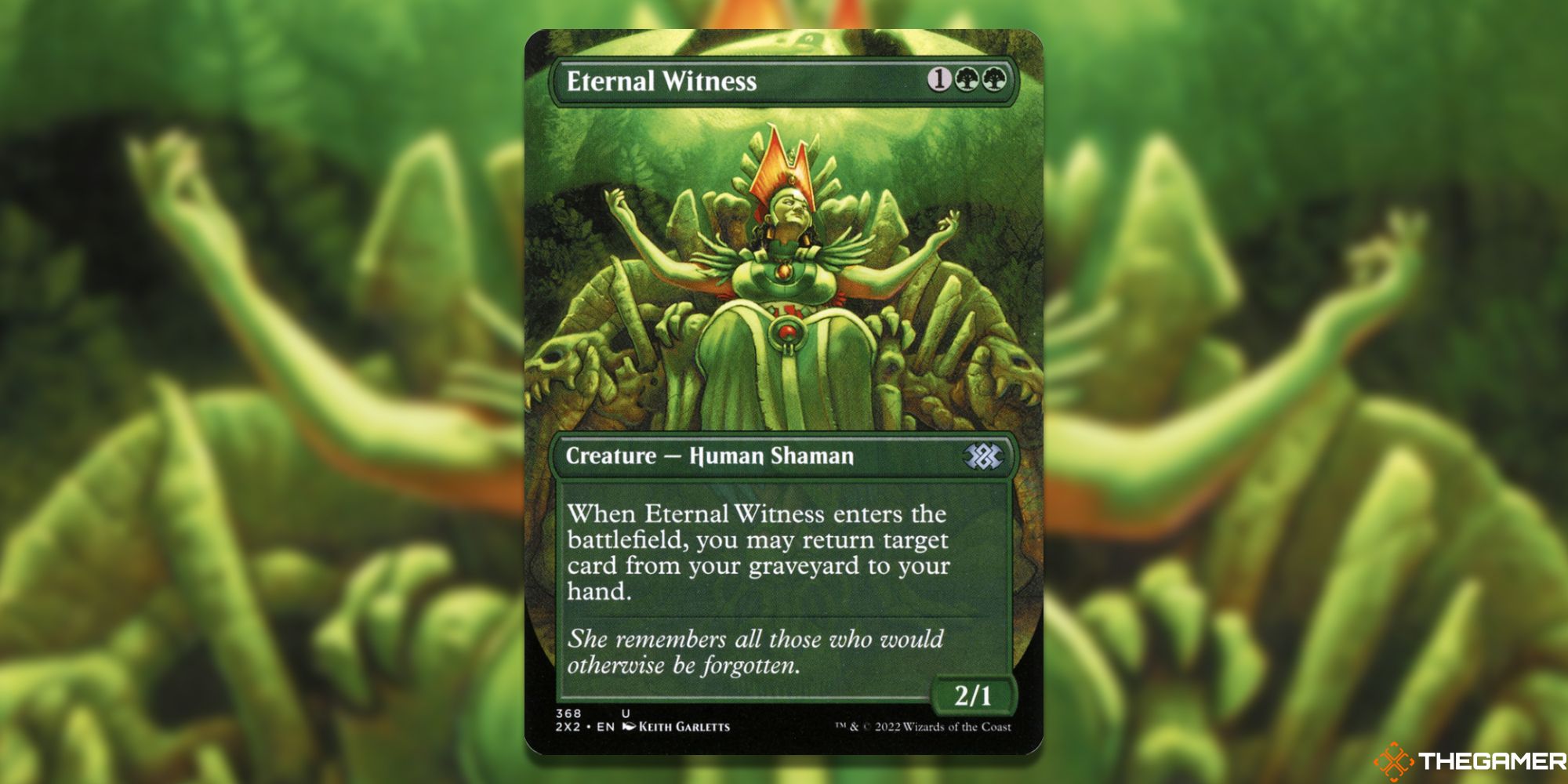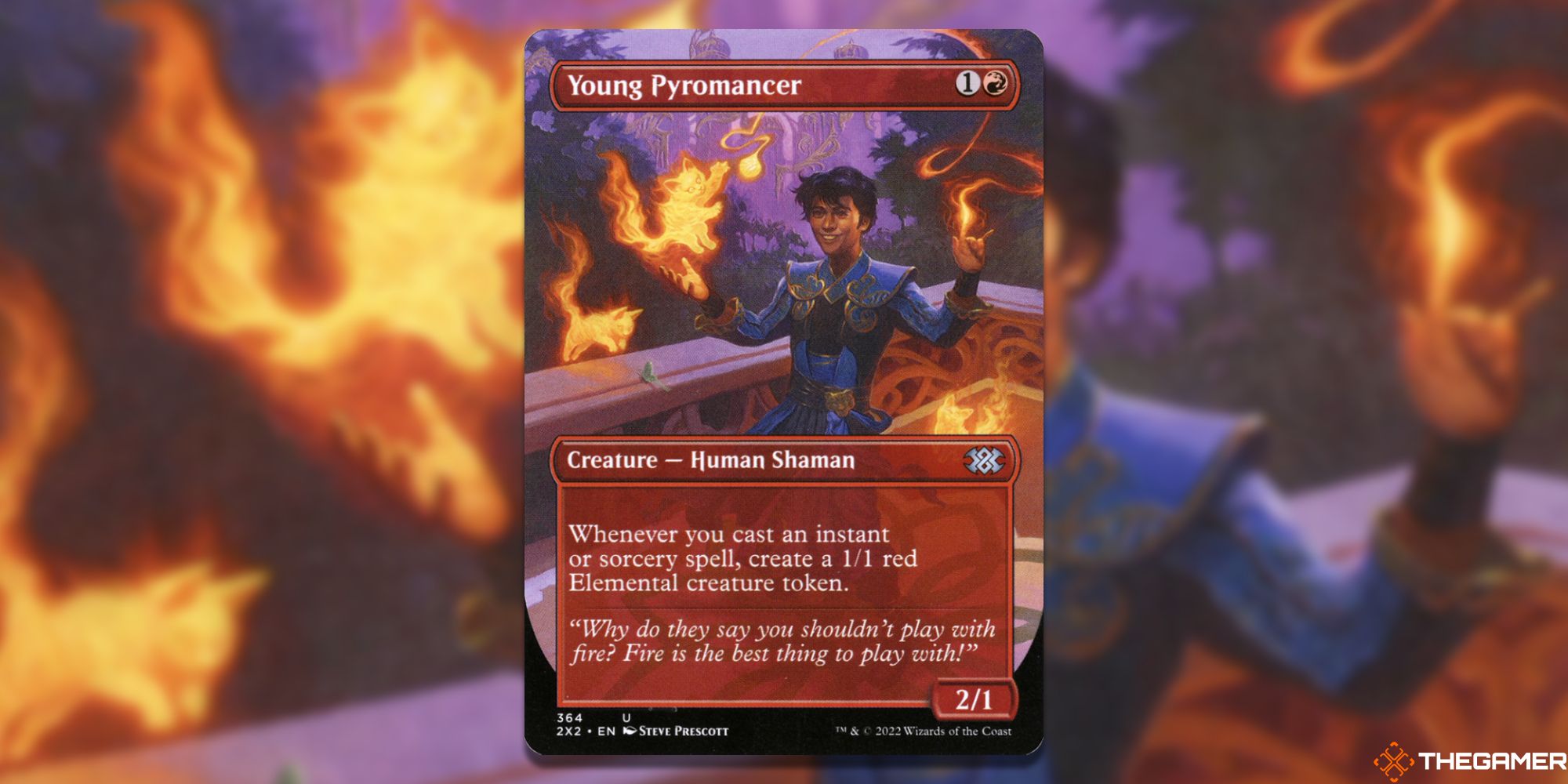Masters sets are a great opportunity for Magic: The Gathering’s designers to celebrate the game’s rich history, packing a range of powerful multi-format staples into a single, painstakingly curated draft format. Double Masters 2022 is no exception, presenting a suite of reprints that are positively drenched in value, from Imperial Seal to Dockside Extortionist.
Beyond the value element, be it financial or sentimental, Masters sets are also a prime opportunity for older cards to receive new, updated artwork. Double Masters 2022 continues this trend with aplomb, enlisting some of the best artists in Magic history to provide new takes on established classics. We’ve gathered the ten best for you here: ten Masterful pieces you should pick up on the Double.
10 Force Of Negation, By Greg Hildebrandt
Greg Hildebrandt’s take on Modern staple Force of Negation stands out for a few reasons. Firstly, because of the limited colour palette; throughout the whole piece, only varying shades of blue and orange are used. This creates a striking feeling of minimalism that differentiates the piece from the majority of Magic artwork.
It’s also just an incredibly dynamic take on a counterspell: the incoming fireballs strike at the mage’s barrier from all angles, forming a burning ring around her that illuminates her amongst the deep blue darkness of the protective sphere. It’s a piece that makes the prospect of countering a spell seem exciting, for the player using it at least.
9 Chaos Warp, By Phil Foglio
Bringing in Magic’s resident comedians, Goblins, Phil Foglio throws one into an unusual magical predicament for this humorous piece. It captures a snapshot of the creature pre-battle, as a spell transforms his armour into a flutter of butterflies.
The look on the Goblin’s face alone is comedy gold, eyes wide and mouth agape as he realises what’s going on. In addition, the extreme contrast between his armour, all dark grey and skull-patterned, with the butterflies it’s quickly becoming, is a lovely touch. The fact that the butterflies are blue, creating a powerful contrast with the surrounding red elements of the card, is the piece’s final, masterful flourish.
8 Grim Flayer, By Richard Kane Ferguson
Any of the pieces contributed to Double Masters 2022 by Magic art icon Richard Kane Ferguson could’ve made this list, but the standout may just be his version of Innistrad’s Grim Flayer. The Flayer himself cuts an imposing figure here, the colour of his skin blending in with the rocky background, reinforcing the connection to the wild elements of nature that this interpretation has.
Beyond this the various skulls, seen at the Flayer’s feet and even in the rocks behind him, paint a picture of a man who has claimed many victims, while his axe and facial expression leave no doubt that there will be many more. This detailed composition, alongside Ferguson’s inimitable style, make this piece a classic.
7 Gruul Turf, By Ron Spencer
A rare look at the social structures and living conditions of Ravnica’s Gruul Clans, Ron Spencer’s take on this bounce land impresses through its sheer detail. A huge number of Clan members are strewn haphazardly around the steps of a temple, fighting, cheering and relaxing as if the death brawl unfolding in front of them is an everyday occurrence.
The red hues of the characters shown here reflect the burning anger and combative nature of Gruul perfectly, leaving the viewer wondering what’s blood and what’s not. The snaking green vines in the background round things out by reminding the viewer of the Gruul connection to nature, a literal symbol of their primal roots.
6 Damnation, By Ian Miller
Magic art has always tapped into the symbolism of religion, to controversial effect in the game’s early days. Ian Miller’s Damnation takes this a step further, presenting a bleak vision of what is, essentially, Hell. An array of tortured souls are visible across the bottom of the piece, subjected to the cruel whims of the dark Angels flying above.
Miller’s intricate pencil-line style lets us see every detail of the sinners’ torment here, the blasted trees and red-tinged sky hammering home the hopelessness of the situation. It's a haunting piece that manages to capture a kind of twisted beauty, one incredibly fitting for a black board wipe spell.
5 Smothering Tithe, By Pete Venters
A powerful symbol of greed and the corrupting effect it can have, Pete Venters’ take on Smothering Tithe does a lot with very little. The bulk of the piece is taken up by an obscene pile of gold coins, the symbol on which links them to Ravnica’s ghostly racketeers, the Orzhov Syndicate.
This isn’t a fun, Scrooge McDuck style gold pile, however. The other major element of the piece is the withered hand covetously clutching the coins, its long nails and visible bones highlighting the fact that, no matter their wealth, no one can outrun their inevitable death. The five rings, each representing one of Magic’s five colours, are a lovely final touch as well.
4 Aether Vial, By Greg Staples
It’s always fun to see fan-favourite Magic characters in new scenarios, and this version of Aether Vial from Greg Staples is a great example of this done right. Aether Vial is an iconic eternal staple renowned for its power level, and this is expressed nicely through its updated design, which leans into elegance and grandeur to great effect.
The background is the exciting part, however. Emerging from the shadows we see Dack Fayden, the ‘Greatest thief in the Multiverse’, easily distinguished by his red right hand. Framing this precious artifact as the target of a heist is a genius move that both reinforces its value and allows for a nice bit of character crossover.
3 Anger Of The Gods, By Dermot Power
Like a scene lifted straight from Norse mythology, Dermot Power’s take on Anger of the Gods is infused with a sense of importance that few pieces achieve. The dark forest setting is a great start, grounding things in reality while leaving room for the light of the central figure’s attack to illuminate the scene.
The blinding beam that bisects the piece is a strong central axis, while the smaller bolts of lightning that snap off and strike the surrounding demons create a dynamic impression of the seismic impact of the attack. Finally, the central figure himself, clad in armour that almost looks silly by modern standards, reinforces the traditional mythological angle the piece is going for.
2 Eternal Witness, By Keith Garletts
Eternal Witness is a card that needs no introduction for most players, and will likely, aptly, be a Commander staple for the rest of time. That said, this rendition of the character by Keith Garletts cuts to the heart of the concept better than most, presenting a scene where the weight of history hangs heavy in the air.
The throne built of prehistoric bones is naturally a great start, the green tinge across it making something potentially macabre glorious and reverential instead. The final touch, the phantom pterodactyl spreading its wings behind the card name, is a brilliant link to the throne, and a reminder of the Witness’ very real spiritual power.
1 Young Pyromancer, By Steve Prescott
A fun take on a Modern classic, Steve Prescott brings new depth to a character that, previously, was little more than a Chandra Nalaar fanboy. Casting the summoned Elementals as Cats here is a wonderfully playful touch; one that’s developed into a motif by the tiger clasp on the Pyromancer’s belt. This hints at a long-running tradition of Cat-based magic that is further explored in Prescott’s art for Seasoned Pyromancer, also in the set.
In addition, the filigree gold on the Pyromancer’s robes, and the high-rise spires in the background, place the scene on the Plane of Kaladesh, the home Plane of Chandra Nalaar. This neatly brings things full circle, creating a piece that looks to the future while still respecting the past.


